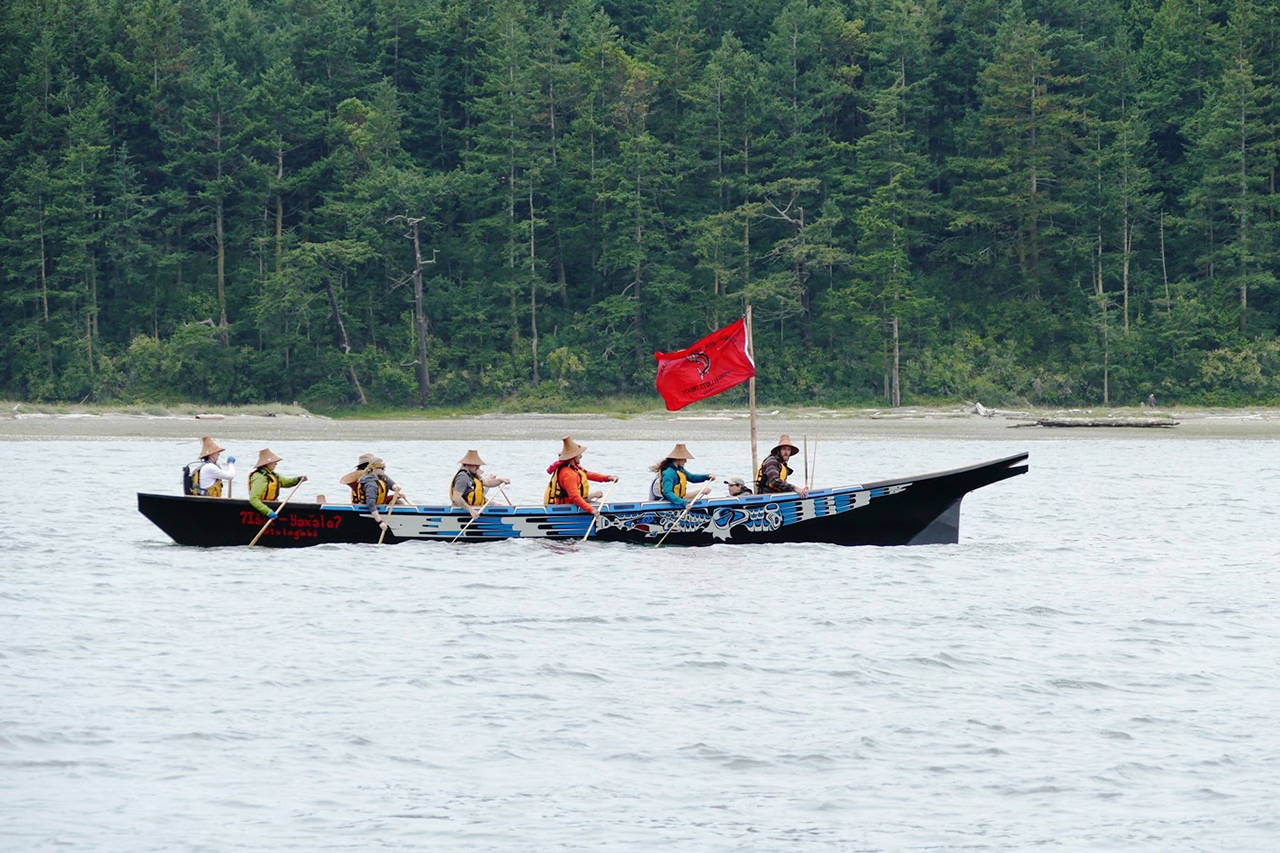by Kai Sanburn
Special to the Weekly
“To make a show of respect and peaceful intent when arriving by canoe, the crew executes a full counter-clockwise circle just in front of the hosts on shore. When the canoe is broadside, it is proper to go paddles-up, to lift paddles overhead with tips pointed skyward.”
So says Lopezian Sam Barr, 27, of Samish descent, a member of the Samish Stewards Institute and co-founder with Erin Licata of the Coast Salish Stewardship Corps, as he describes traditional tribal protocols when arriving by canoe within the Salish Sea.
Sam is currently skippering the Stilliquamish canoe in this year’s tribal journeys, “Standing Together,” sponsored by the We Wai Kai Nation and the Wei Wai Kum Nation. After two weeks and 11 visits through the Salish Sea northward, more than 100 canoes will end their journey at Campbell River, British Columbia, in early August. The mid-summer sea trek marks the 30th year of annual tribal canoe journeys.
Growing up, Sam says he knew of his Samish background through his great-grandmother, though it was, “certainly nothing official,” he says. “But there is a lot of latent power in the islands that I believe is connected to tribal presence. I’ve always felt drawn to the salt water, enjoyed paddling, enjoyed learning about environmental ecology and marine biology.”
Sam credits many elders and mentors with his deepening connection to his tribal heritage, among them, Rosie Cayou, Russel Barsh, George Adams and Roy and Randy Daniels, but attributes his first canoe journey five years ago with revealing the way forward for him.
“After my first canoe trip,” Sam remembers, “I knew that it would be a big part of my life. I felt at home on the canoe, I loved the songs, the learning, and the deeper meaning behind it all.
“A very special moment for me was in the summer of 2016, during the National Parks Centennial Celebration and the raising of a totem at Pe’pi’ow’elh (English Camp on San Juan Island), when the Samish canoe landed on the shore, and there was a Lummi tribal member, Lucas Washington, to greet us. We spoke to each other in Lekwéngen, and I actually understood what was said. It was an event that had not happened in that language for a long time. So cool!”
Sam describes the experience of the crew pulling together in the canoe cooperatively. “It’s called “xéchnginglh,” Sam says, “meaning ‘our hearts and minds are one.’ Everyone is paddling in sync and singing a song together when they find that rhythm. The canoe becomes lighter, faster, maneuvers easier. I love it when the weather is a little rough and people dig into that xéchnginglh and pull through it together, with very few words being said.”
Reflecting on the health of the Salish Sea, Sam acknowledges that the water is “pretty dirty in some places.”
“Chief Sealth [siʔaɫ] once said something along the lines of, ‘the days of the people of the clear salt water are near an end.’ I don’t think he was talking only about the people … He was also talking about the days of clear water coming to an end.”
Regarding the hopes of the canoe journey, Sam reflects, “They say that you have to think in terms of seven generations, and after a broken link, it might take people seven generations to rebuild sustainable connections.”
I ask Sam how other Salish Sea inhabitants can best show respect for the indigenous peoples and ecosystems of the region.
“It’s respectful to be interested in learning,” he answers, “to seek indigenous knowledge from indigenous people. Otherwise, the chain of connection is broken. For healing to happen, in terms both social and environmental, the chain can’t be broken more than it already is.”
Lopez Island welcomes the voyagers of 12 canoe families (and their upraised paddles!) on Monday, July 24, at Odlin Park. Canoes are scheduled to arrive between 3 and 4 p.m. A community potluck begins at 6:30 p.m., and the voyagers depart for Pe’pi’ow’elh, or English Camp, early on the morning of July 25.



